Foil wing skateboarding – or wing skating if preferred – is something a few riders we know practice. Windsurfers may recall the good old days of attaching windy rigs to skateboards. And then, there were products such as Turf Dog which were produced with maneuverable windsurf skating in mind (they’re still going by the looks of it as well). It never really caught on quite as much as intended though. Fast forward to the present and the explosion in popularity of foil wing riding has seen rolling on fours whilst driven by wind come back into vogue. To some degree. Skateboarding with an inflatable wing is arguably much easier and more accessible than skating with a windsurf sail attached. The free moving nature of an inflatable wing is one reason. Plus, a lot less wind is needed to actually gain momentum.
Here at Flymount we’re avid fans of wing foiling. But we’ve never really wing skated. Yet it looks intriguing. One rider we know who indulges in foil wing skateboarding often is the editor of SUP Mag UK and Windsurfing UK magazines Tez Plavenieks. We caught up with the chap to find out more about his wing skating shenanigans.
The following topics are covered in this article –
Foil wing skateboarding wins for winter.
Winter can certainly serve up some decent foil wing conditions in the UK. But also, being winter, there can be periods of super cold weather. A case in point is recently (as of January 2024). We’ve just come out of a three week long cold snap. Air temperatures were hovering around 1C during middle parts of the day. And although sunny, thermometer readings weren’t climbing particularly high. Any wing foiler or windsurfer will be aware of the windchill factor. During some foil wing skateboarding sessions my smartwatch was telling me the ‘feels like temperature’ was -5C!
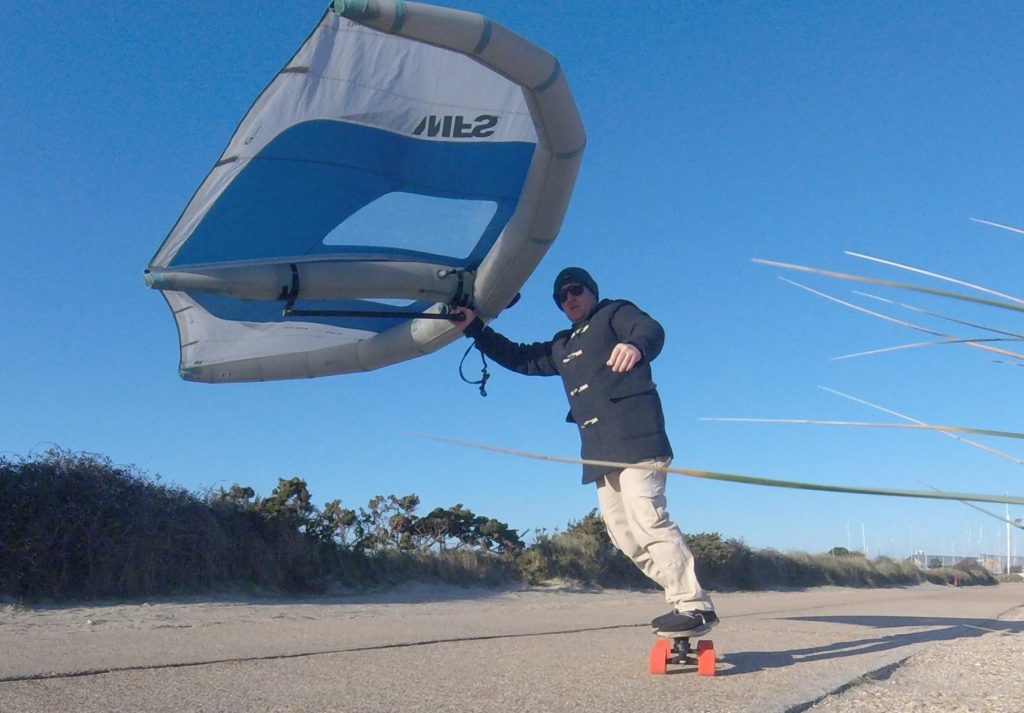
With any water in the mix the windchill factor is exacerbated when it’s this cold. I appreciate some riders regularly go afloat in spots where it’s chillier still. But I’m just not into it. Standing behind my van with a monumental case of hot aches is no fun as far as I’m concerned. My fingertips just don’t thank me. And yet. I can’t just sit by and do nothing when there’s breeze. This is where wing skating comes in.
Surf skateboarding setups and foil wings.
I’ve always been a skateboarder to some degree. Yet I’ve never really gone after the street skating part of the sport. Chucking myself down flights of stairs was never really my bag. Those kinds of antics can end badly. And I don’t want to end myself or get injured which keeps me off the water when foil wing conditions look good. Skating is very much a complimentary activity – albeit a fun one – that helps me scratch that itch.
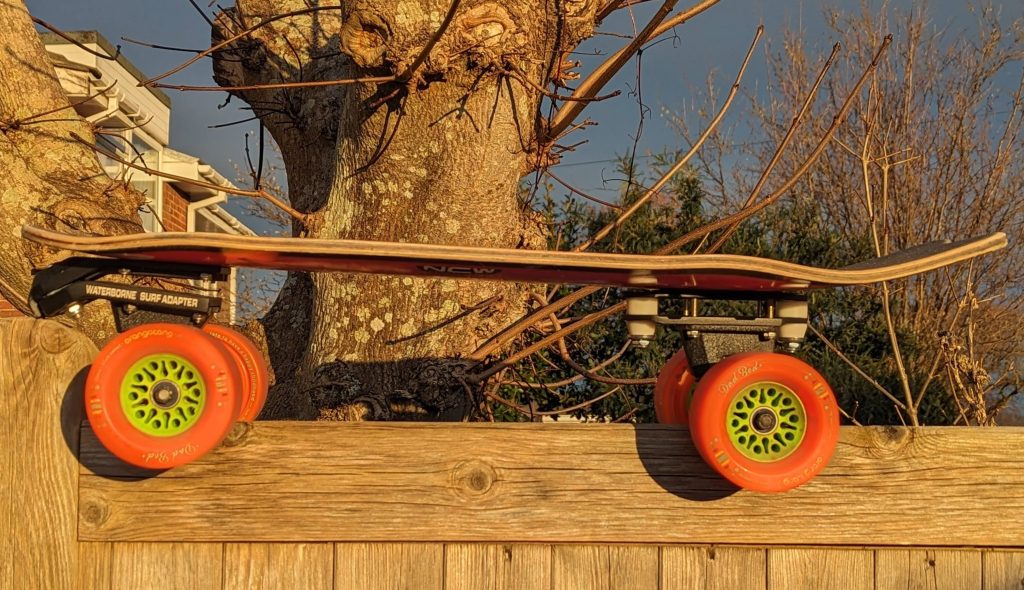
Surf skating came on my radar very recently – although historically I’ve chosen manoeuvre-led skate setups. Surf skateboards are hyper nimble offering around 30% more carving ability than a standard skate setup. The specially designed front truck allows riders to really lean. Some brands – such as Waterborne Skateboards – offer additional ‘tools’ whereby the whole rail of the deck can be engaged. Much like a surfboard. For foil wing skateboarding this is great as it means dialing in moves – even in small spaces – can be achieved. Surf skates are also pumpable. To some degree, this mimics how foilers pump on the water. In a lot of ways surf skating has real synergy with wing foiling allowing riders to milk the bottom end of the spectrum. Adding a wing is a natural progress (in my opinion at least).
How much wind do you need?
As with wing foiling (once you’ve dialed in those key skills) you don’t need turbo wind for foil wing skateboarding. 10knots and you’re good to go with a 4m. You may have to kick a little times, as Terra Firma can be a little ‘sticky’ with more friction than water. But with a little forward momentum, your wing will provide the additional juice to keep rolling.
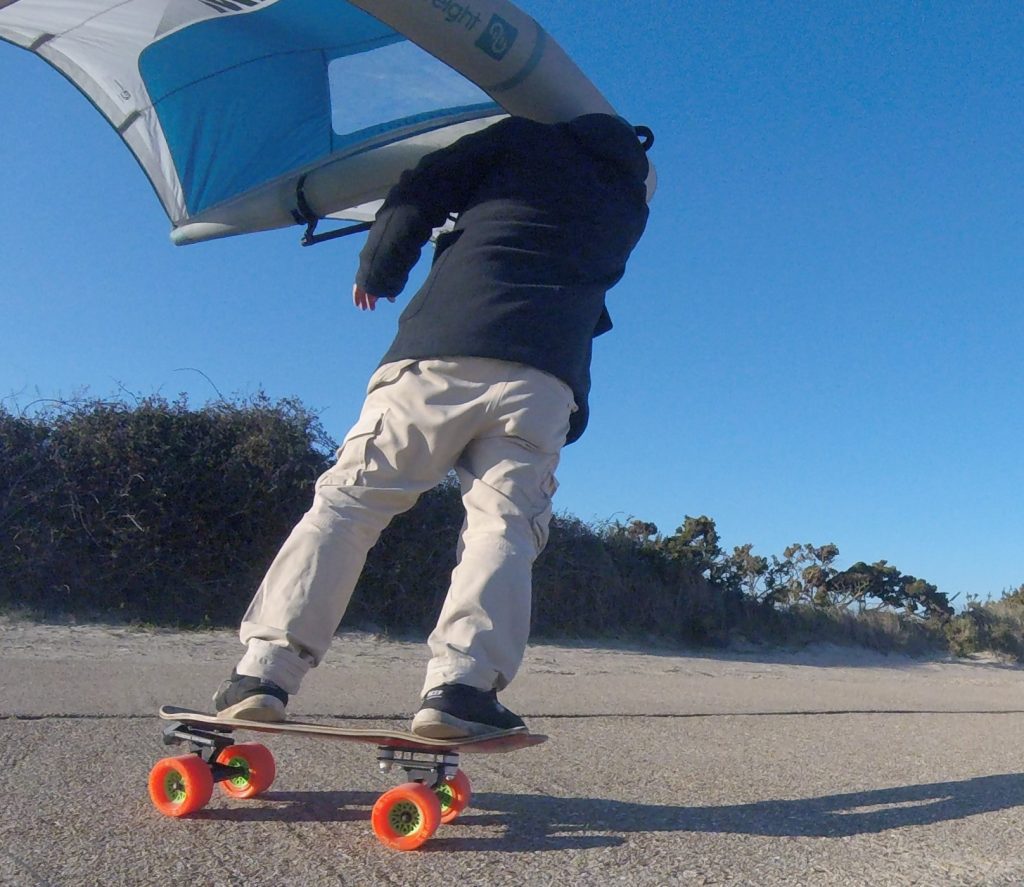
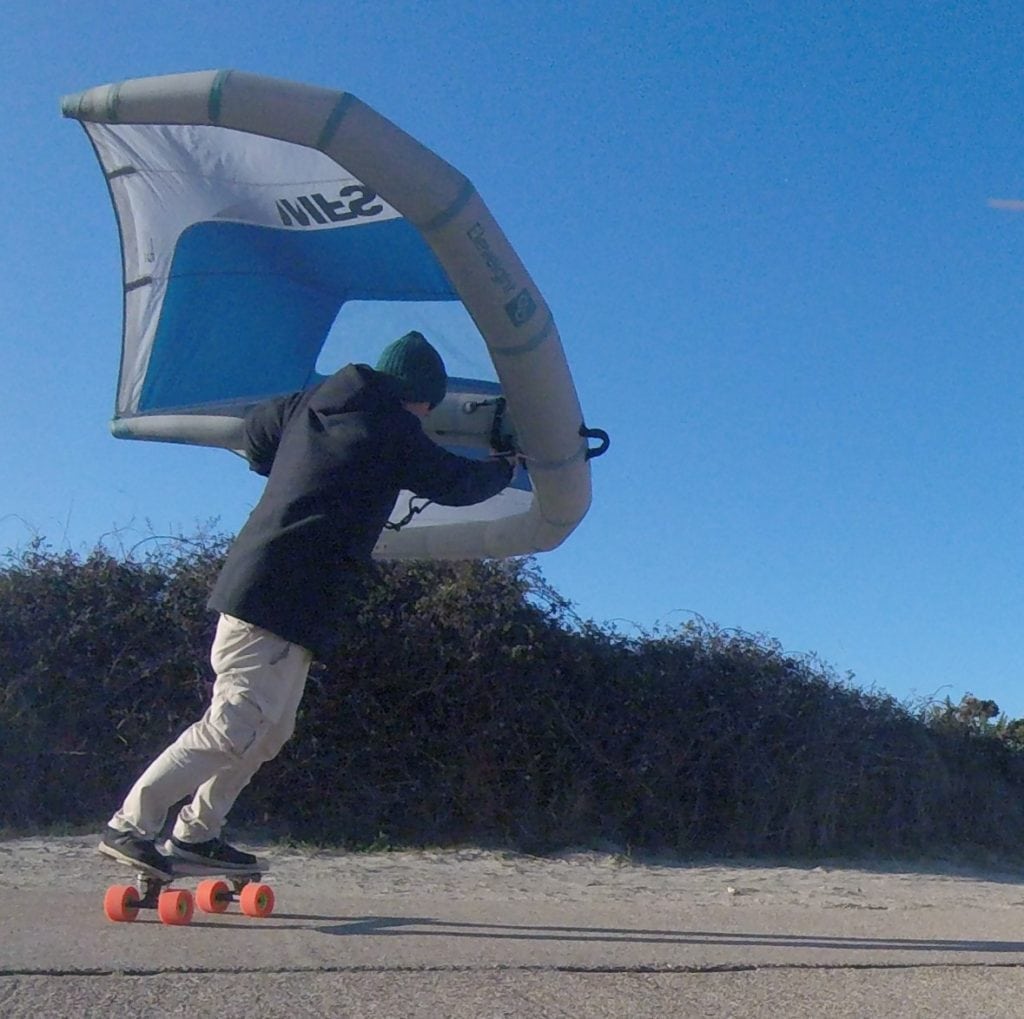
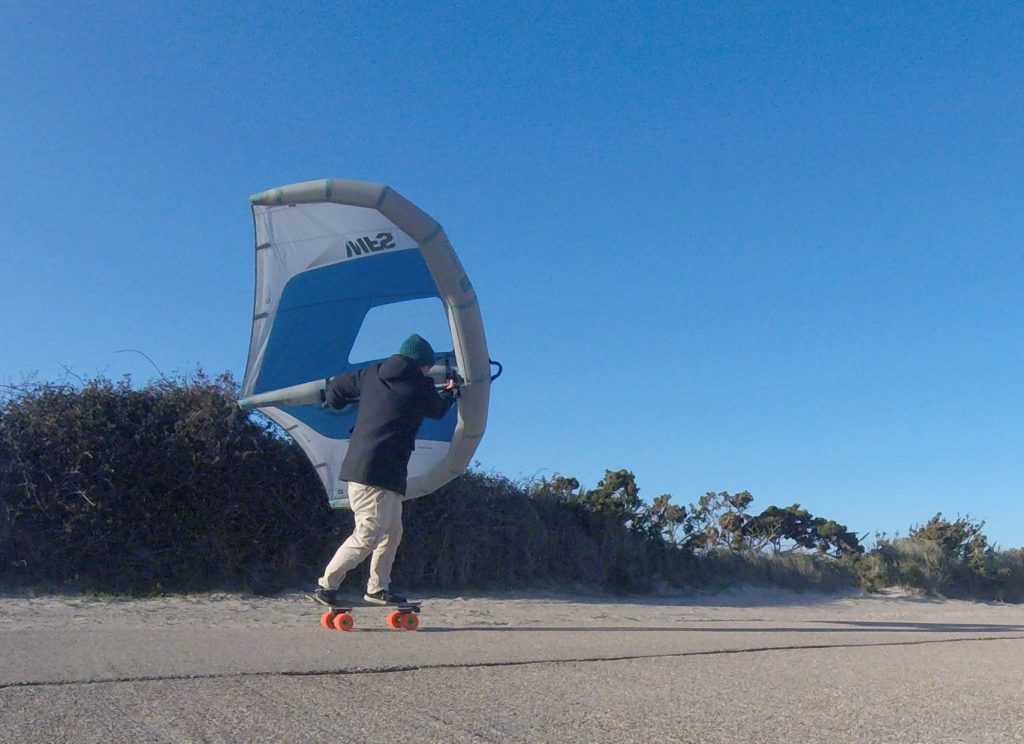
If wing skating (or even surf skating) flicks your switch you may want to consider your competent parts for a better experience. As already mentioned I use specific surf adapters – retrofitted to my deck with the trucks bolted on – that loosen up my sled massively. My deck of choice is fairly small but designed with surf skating in mind. It’s still quite wide though with a pronounced concave and deck ‘hooks’ on the rails to keep my feet locked in.
Anything else as far as your setup goes?
A big talking point with my surf skate setup is the wheels. At 105mm in diameter and bright orange, they’re certainly attention grabbing. All through history, skateboarders have been obsessed with wheels. The Orangatang Dad Bods I use with my ChargerX surf skate deck (31″) make the whole setup look akin to a monster truck!
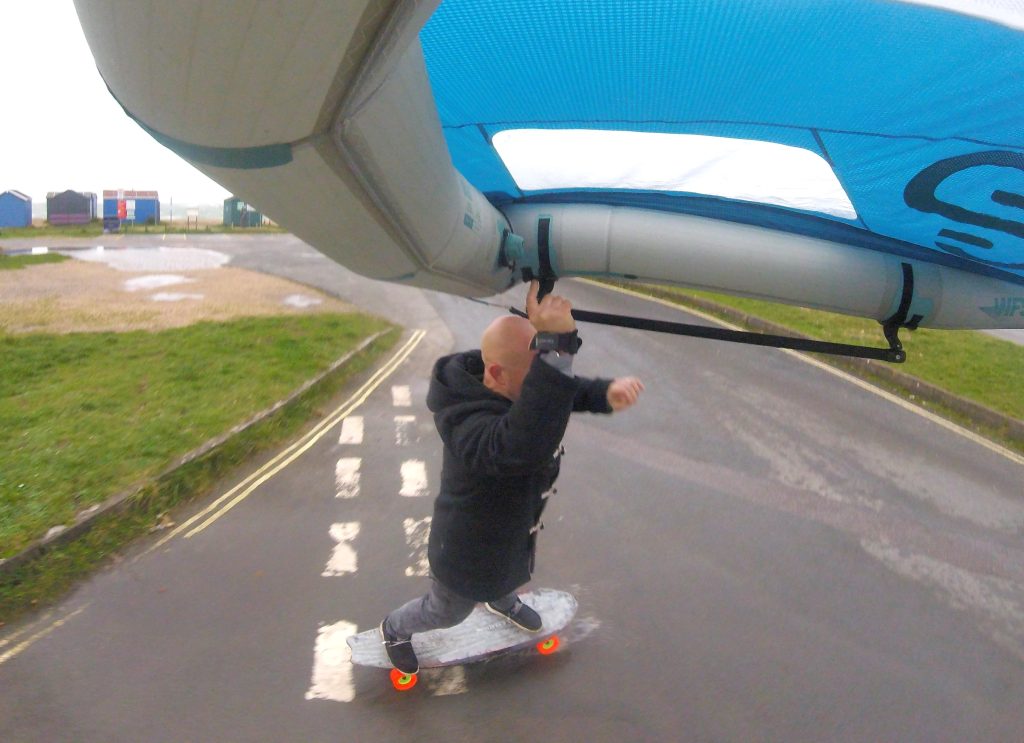
But there’s method in the madness. Orangatang Dad Bod wheels are designed to give lots of roll. And if you hit a stone, rather than chuck you off, the wheels spit the grit out and keep on going. This instills lots of confidence in the rider and gives the opportunity to wing skate and surf skate spots with rougher surfaces. They also offer a degree of additional stability. And they grip. If I’m surf skating transitions and bowls, sans wing, I can pump up to the coping and carve off the top much like surfing. I don’t need to kick turn or air out. I’m not looking for extremes. I just want to have fun. And not have even more risk as far as hitting the deck.
What about your preferred foil wings?
You can wing skate with any size of foil wing in theory. I’ve used a 7m. But without the clearance of being up on foil when afloat, there’s more risk of catching the wing’s tips. And concrete isn’t that forgiving. I also like the throw about the handling of a smaller wing. So for wing skating these days I wouldn’t go bigger than 5m with 4m being optimum.
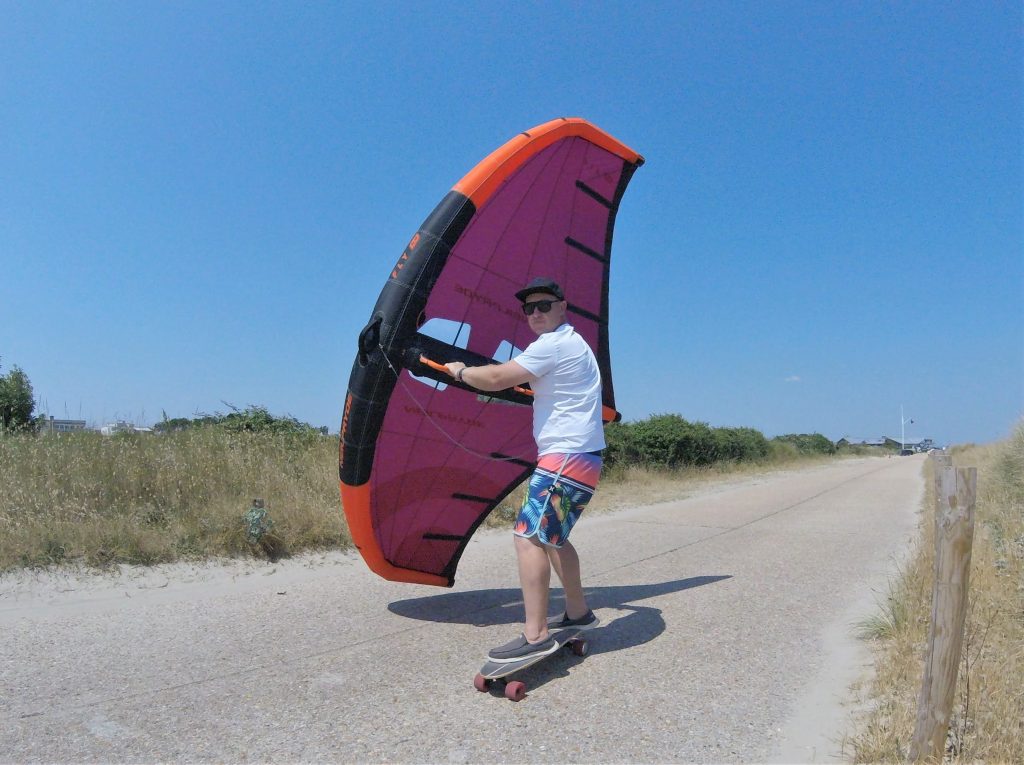
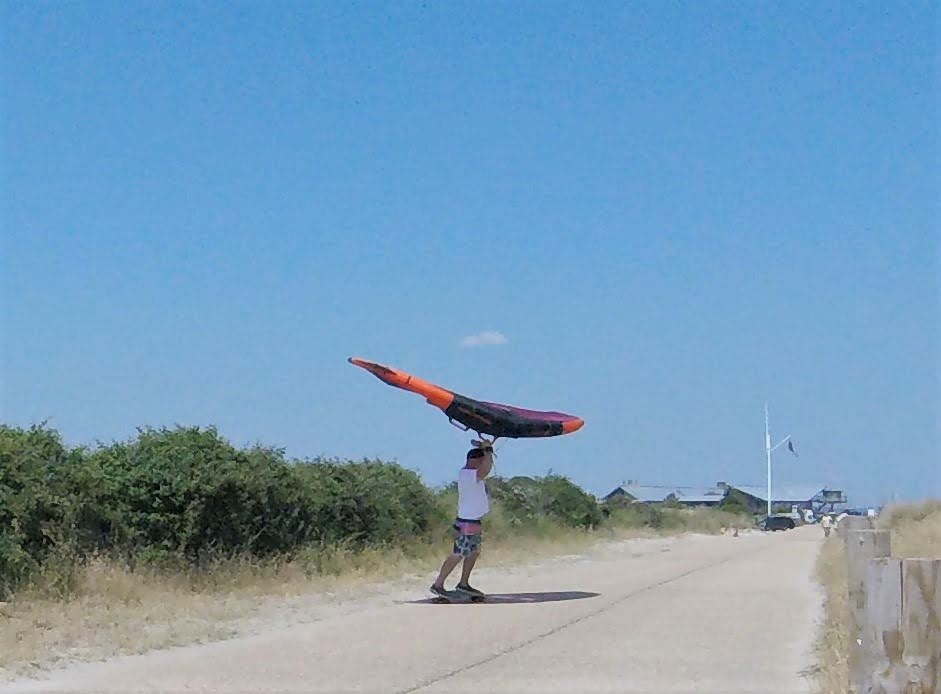
In terms of other wing features that’s down to the rider. I prefer boom or handle wings but also use semi-rigid and soft handle wings too. They all offer specific handling characteristics for both wing foiling and foil wing skateboarding. It’s a personal choice thing. I will say that a wind with decent reinforcing is a good idea for wing skating though!
Where can you wing skate?
You can wing skate anywhere there’s enough space to roll around. You don’t need a massive ‘playing field’. But ideally, the surface should be as smooth as possible. Some riders I know wing on hard packed sandy beaches. They tend to use mountain boards for this. I don’t have that option so it’s tarmacked surfaces and concrete.

In all instances, you need to be aware of others around you. Members of the public won’t have a clue what you’re doing and can’t anticipate your movements. So stay clear. Dog walkers particularly get antsy. I’d suggest stopping and letting them pass so you don’t spook the dog(s).
How do you capture that foil wing skateboarding action with Flymount?
I test a lot of watersports equipment as part of my job. Sometimes, if reviewing a wing, I take it wing skating as this can throw up nuanced handling characteristics that mightn’t be so obvious on the water. A lot of what else I do (creating and writing articles for magazines and such) relies heavily on image. So I often have my GoPro and Flymount action cam mounts with me.
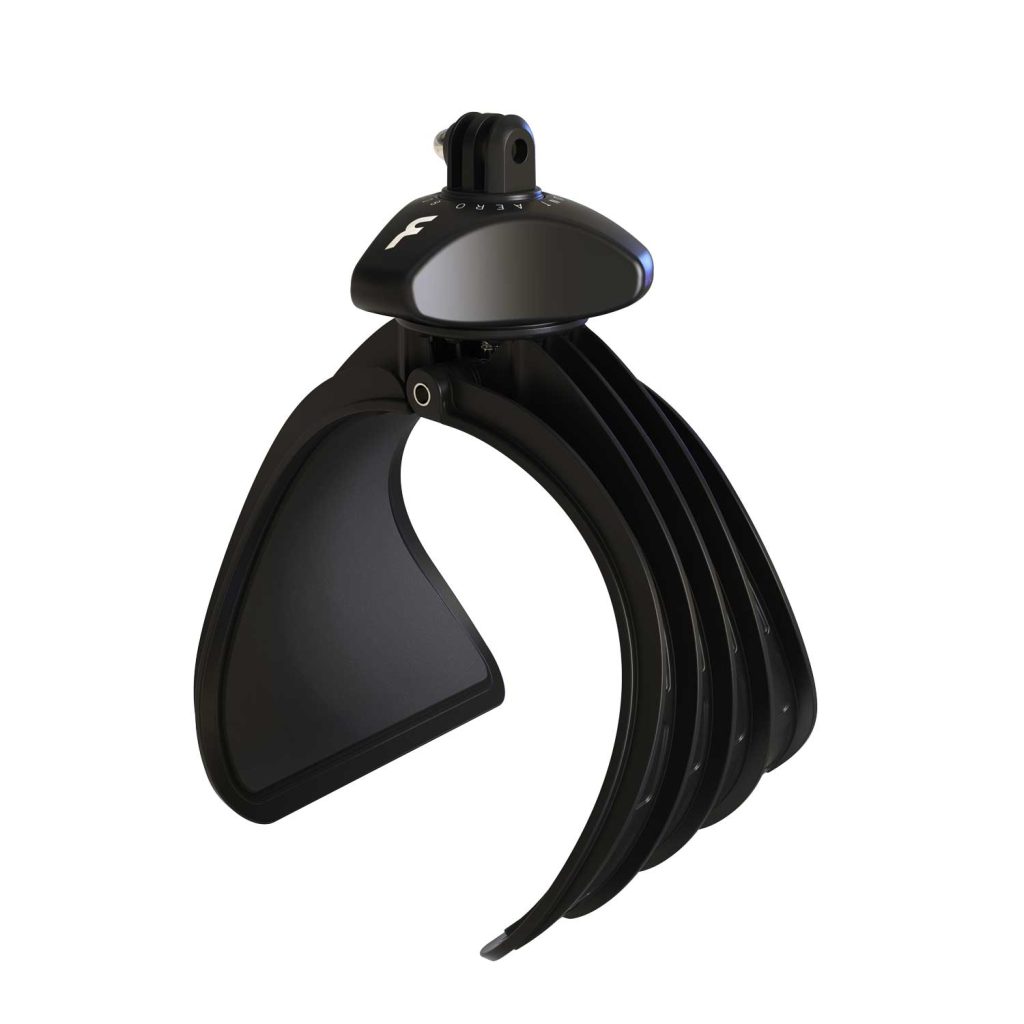
Flymount Aero-130 Ultralight Wing and Kite Camera Mount
It goes without saying I make good use of the Flymount Aero 130 wing mount. But I don’t just use it attached to the wing. The wide clamping jaws fit around all manner of static tubular objects. I like getting different angles so will often attach the Aero 130 and GoPro to lamposts, bollards, fencing and other freestanding mounting points. It’s a versatile camera mount that also works as a solo tripod when you open the clamp wide. You can sit the camera on a flat surface and be confident it’ll not fall over. All I then have to do is ride closer enough and be dynamic with what I’m doing.
Any final thoughts?
Foil wing skateboarding is never going to be for everyone. I appreciate it’s a bit fringe. There’s also a stigma attached to mums and dads who ride skateboards. Yet I can tell you it’s the older generation of riders who actually buy skateboarding products. Whether for themselves or their offspring.
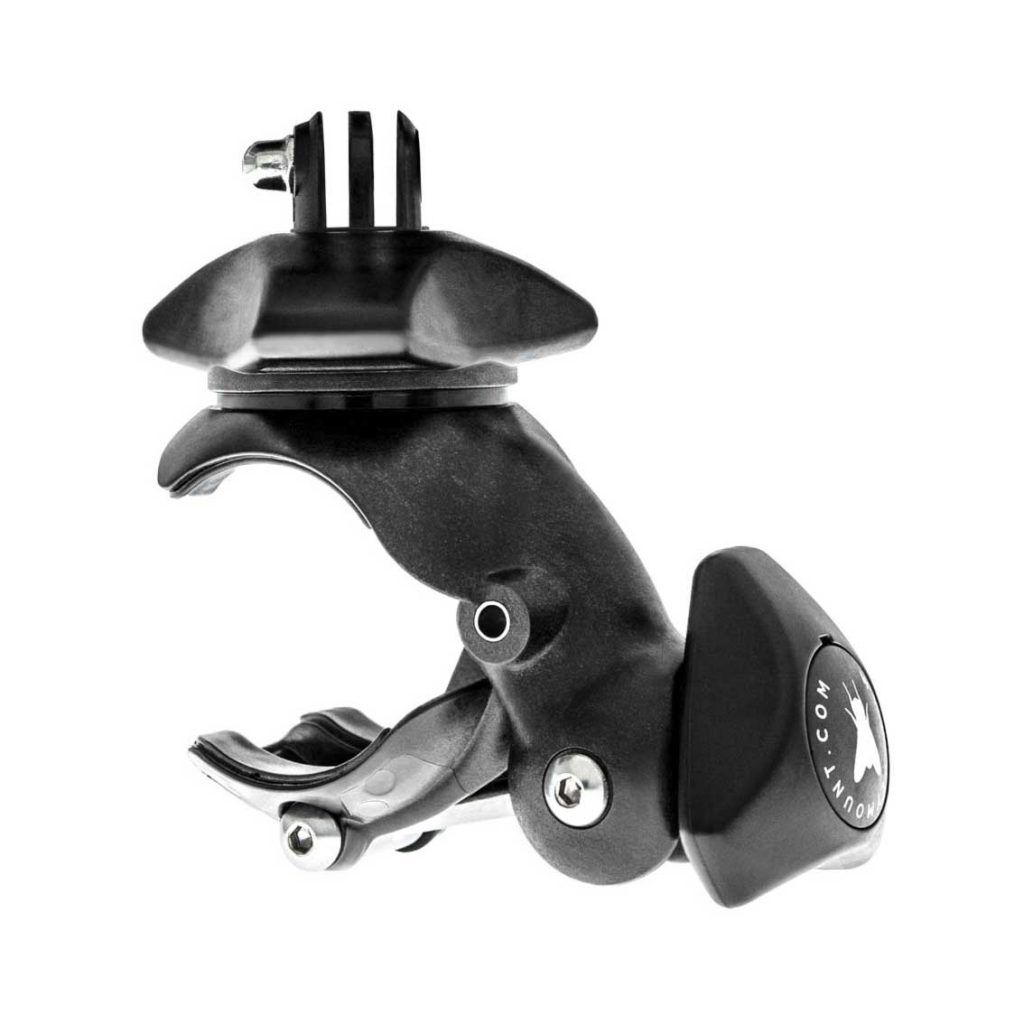
Flymount Original Action Camera Mount
There’s more than one way to skin a cat, as the saying goes. And foil wing skateboarding is a great activity to do alongside your standard wing foiling. I’ve used to help others learn how to wing – prior to going afloat. And for learning new moves – especially transitions – it’s a great way to dial muscle memory in. The bottom line is: try it! You might like it…
If you have any questions about Flymount action cam products and how they might fit your application get in touch here. Also, check out Flymount’s online shop for a full list of products here.

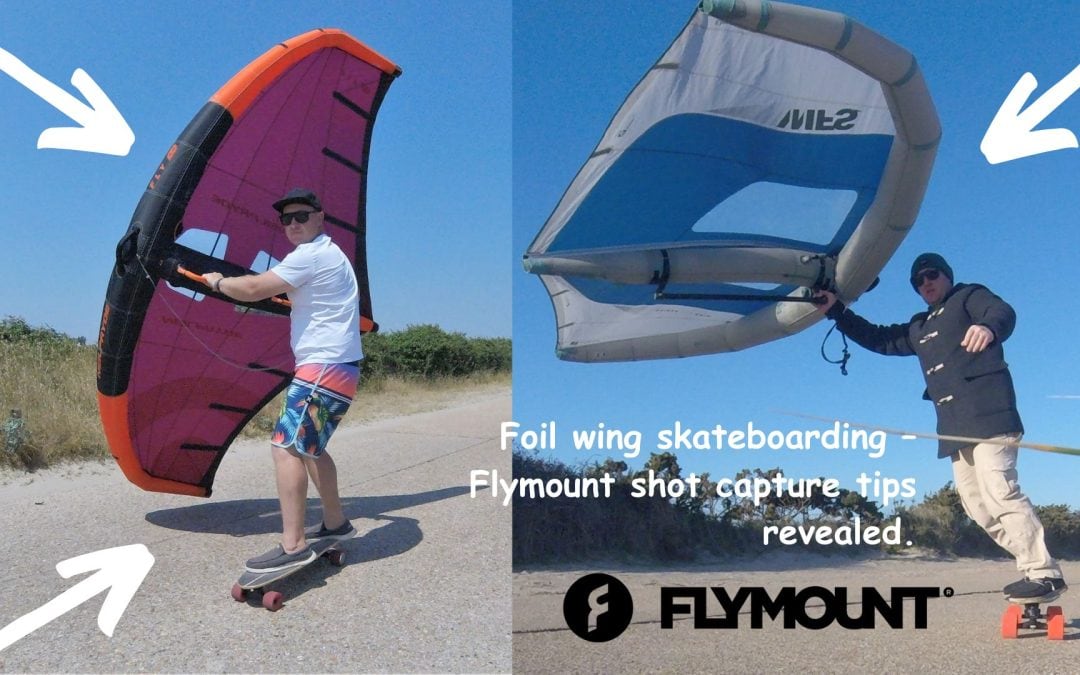
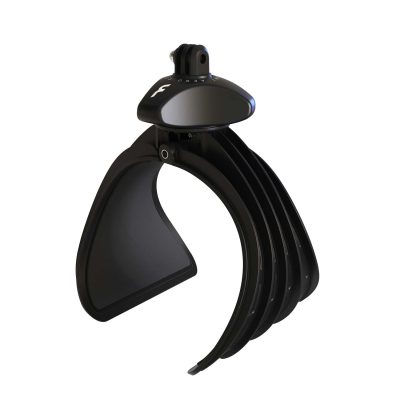
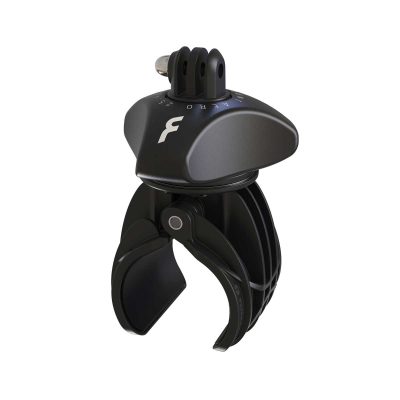

Recent Comments